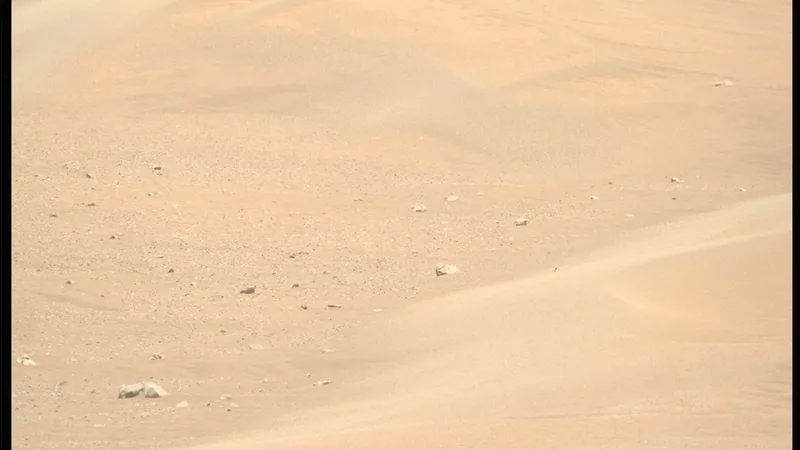
Mars Rover Perseverance Unveils Breathtaking ‘Megaripples’ as It Explores the Red Planet
2025-08-28
Author: Jessica Wong
Journey to the Surface of Mars
NASA's Perseverance rover has recently captured an astonishing image of colossal sand formations known as 'megaripples' during its ongoing exploration of Mars. This remarkable discovery took place at a site called Kerrlaguna on August 13, where the rover is closely examining how Martian winds continue to shape the planet's unique landscape.
What Are Megaripples?
These megaripples are sandy ridges, each towering about three feet high, that can be found scattered across the Martian surface. They occupy a middle ground in size between smaller ripples and larger sand dunes. Scientists believe these formations are relics from a time when Mars possessed a thicker atmosphere and stronger winds, potentially providing hints about the planet's climatic shifts over millions of years.
Examining Inactive Features
At Kerrlaguna, the megaripples are classified as 'inactive,' meaning they haven't noticeably changed or shifted in years. Unlike Earth’s ripples, which are constantly moving, Martian megaripples are made up of fine sand obscured by coarser grains, making them resistant to wind erosion.
Interestingly, satellite observations suggest some megaripples do move, albeit gradually—creeping about one meter every nine Earth years. This slow migration indicates that Mars's surface is geologically active, challenging past assumptions that it was stagnant.
Unearthing Secrets Beneath the Sand
Perseverance is equipped with advanced scientific tools, including cameras and chemical analysis instruments, to dig deeper into the mysteries of Kerrlaguna. These tools allow researchers to study the size, layering, and composition of the sand grains, and even detect residual salty crusts that could reveal past water interactions. Such discoveries could be crucial for future human missions to Mars.
The Road Ahead for Perseverance
Following its exploration of Kerrlaguna, Perseverance had previously encountered challenges climbing rocky terrains towards a site called Midtoya, where it collected valuable data from rocks that rolled down the slope. One such rock, dubbed 'Horneflya,' gained attention for its striking helmet-like shape.
Perseverance's mission is not just a standalone effort; it continues a legacy of Martian exploration. Nearly a decade ago, the Curiosity rover studied active dunes at Namib Dune. However, while dynamic dunes showcase surface changes, scientists now appreciate the insight gained from these slower-moving megaripples that illuminate Mars's evolutionary history.
What’s Next?
The rover's journey at Kerrlaguna is merely a preview, as it prepares to head south toward a more extensive field of megaripples named 'Lac de Charmes,' where NASA has planned a comprehensive study. The ongoing research continues to reveal that, while ancient rocks tell stories of Mars' past, the modern environment holds secrets we have yet to uncover.



 Brasil (PT)
Brasil (PT)
 Canada (EN)
Canada (EN)
 Chile (ES)
Chile (ES)
 Česko (CS)
Česko (CS)
 대한민국 (KO)
대한민국 (KO)
 España (ES)
España (ES)
 France (FR)
France (FR)
 Hong Kong (EN)
Hong Kong (EN)
 Italia (IT)
Italia (IT)
 日本 (JA)
日本 (JA)
 Magyarország (HU)
Magyarország (HU)
 Norge (NO)
Norge (NO)
 Polska (PL)
Polska (PL)
 Schweiz (DE)
Schweiz (DE)
 Singapore (EN)
Singapore (EN)
 Sverige (SV)
Sverige (SV)
 Suomi (FI)
Suomi (FI)
 Türkiye (TR)
Türkiye (TR)
 الإمارات العربية المتحدة (AR)
الإمارات العربية المتحدة (AR)